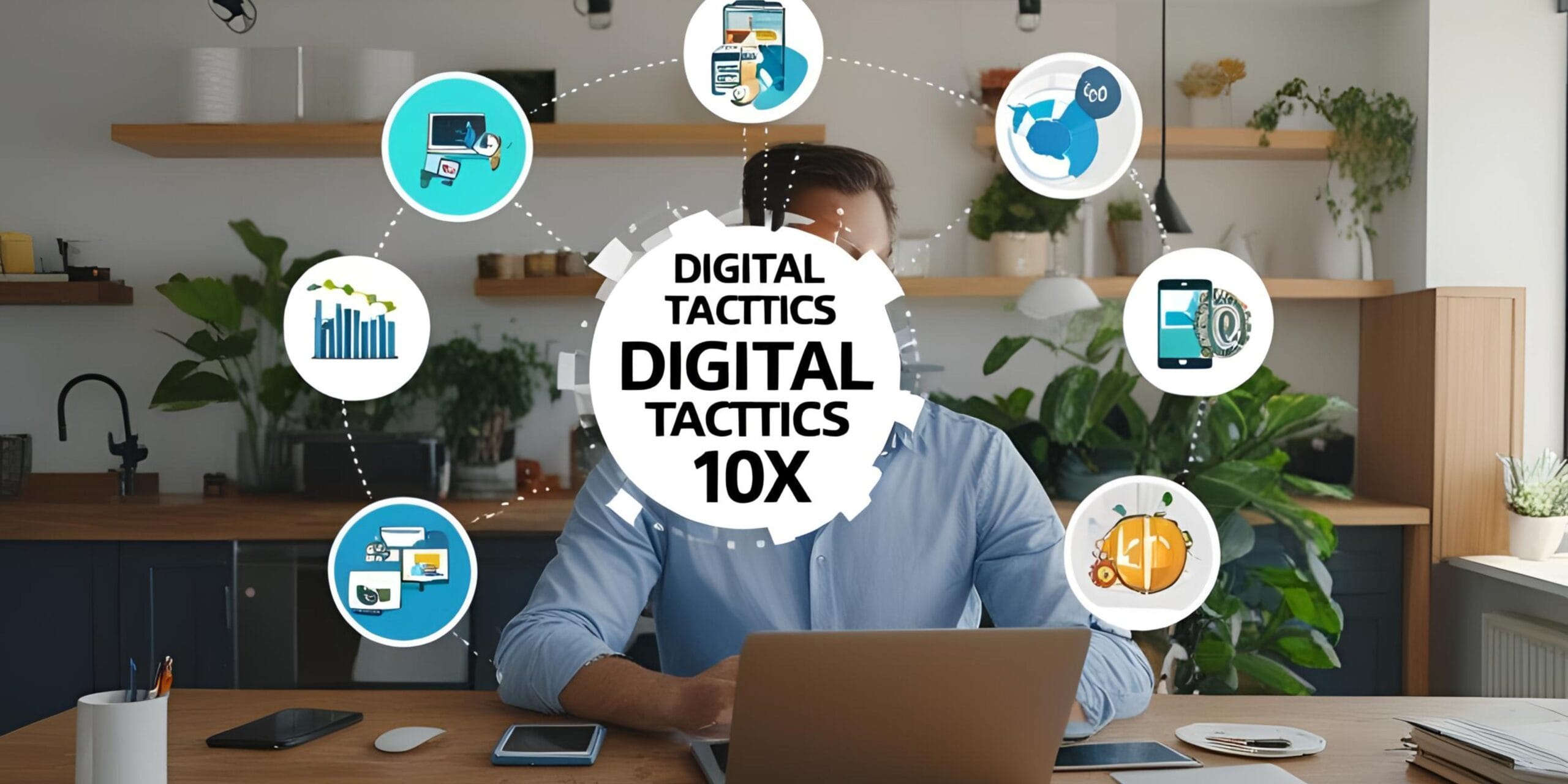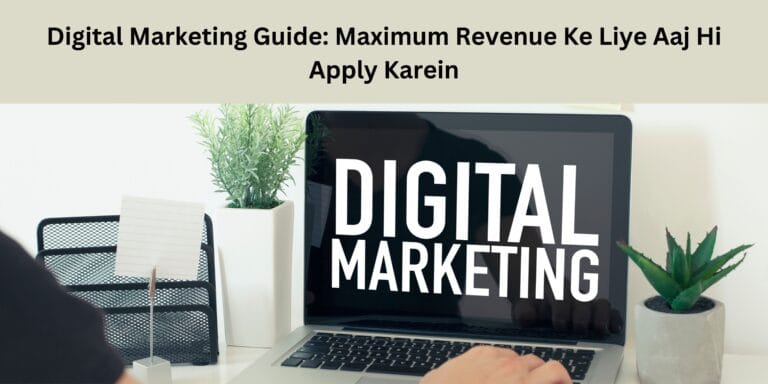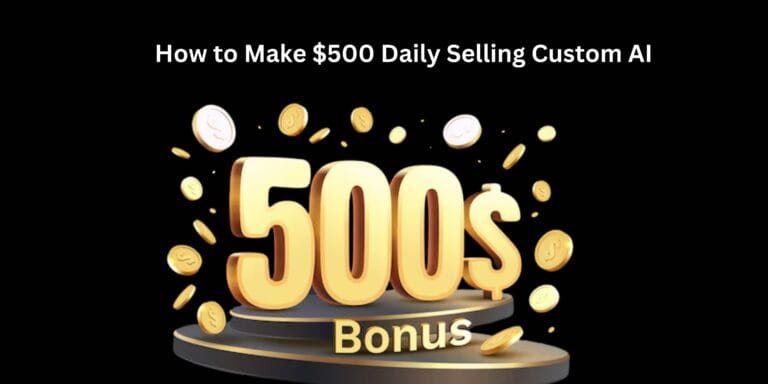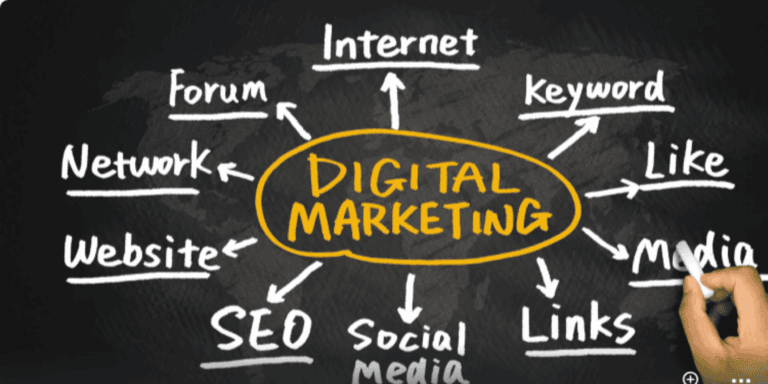Digital Tactics That Make Business 10X: Tips for Traffic and Earnings
Growing a business in today’s digital world is no longer rocket science. It is essential to use the right digital strategies and tactics. In this article, we will discuss the 5 major tactics that can not only drive traffic to your business but also exponentially increase earnings. These tactics will cover SEO, social media marketing, paid ads, email marketing, and influencer marketing. In each section, we will provide real-life examples, case studies, and practical tips that you can implement immediately.

1. SEO: The King of Organic Traffic
SEO, or Search Engine Optimization, is a long-term investment for your business. This technique helps your website rank higher on search engines, driving natural (organic) traffic.
How Does SEO Work?
Keyword Research: Every successful SEO strategy begins with selecting the right keywords. Understanding what your potential customers are searching for is crucial. For example, if you run an organic skincare brand, users might search for “best natural face cream” or “chemical-free skincare.” Tools like Google Keyword Planner or SEMrush help analyze these trends.
On-Page Optimization: On-page SEO involves optimizing each page of your website so search engines can easily understand its topic. This includes meta titles, descriptions, headings, internal linking, and image optimization. Write content naturally, avoiding keyword stuffing. A strong on-page strategy provides relevant information, boosting user engagement.
Technical SEO: Website structure, loading speed, mobile-friendliness, and URL structure are key technical SEO aspects. A slow or non-mobile-responsive site harms user experience, increasing bounce rates. Additionally, properly configuring XML sitemaps and robots.txt files ensures search engine bots can efficiently crawl your site.
Backlink Building: High-quality backlinks are a trust factor for search engines. When reputable websites link to your content, your site’s authority increases. You can build backlinks through guest posts, partnerships, or digital PR. For niche blogs or local businesses, links from local directories and community websites are also beneficial.
Read More:
Digital Tactics That Make Business 10X: Tips for Traffic and Earnings
Real-Life Example & Case Study:
A small organic food store optimized its website for the keyword “healthy organic snacks.” They enhanced on-page SEO with blog posts, recipe videos, and customer testimonials, and collaborated with local health bloggers for quality backlinks. Result? In just six months, their organic traffic surged by 350%, with a noticeable sales increase. This shows SEO is a slow but sustainable growth strategy.
Additional Tips:
- Regular Content Updates: Periodically update old content to maintain SEO relevance.
- Focus on User Intent: Understand the user’s actual intent before creating content.
- Use Analytics: Monitor traffic with Google Analytics and Search Console to identify and implement improvements.
2. Social Media Marketing: The Secret to Going Viral
Social media platforms have become a powerful digital marketing tool. They not only boost brand awareness but also generate direct traffic and engagement for your products or services.
Key Elements of Social Media Marketing:
Platform Selection: Not every platform suits every business. For fashion or lifestyle brands, Instagram and Pinterest offer great scope for visual content. For B2B services, LinkedIn and Twitter are more effective. Choosing the right platform ensures direct access to your target audience.
Content Strategy: Effective social media marketing requires creative, engaging content. Interact with your audience through regular posts, stories, reels, or live sessions. Content must be authentic and valuable. Memes, behind-the-scenes videos, user-generated content, and educational posts keep followers engaged.
Engagement & Community Building: Success on social media goes beyond posting. Actively respond to comments, messages, and reviews. Community building creates loyal customers who become brand advocates, driving organic growth.
Analytics & Performance Tracking: Each platform provides insights into content performance. Regularly check social media analytics and adjust your strategy accordingly.
Real-Life Example:
A local clothing brand adopted a consistent posting schedule on Instagram, sharing attractive visuals, short reels, and interactive Q&A sessions. They also ran micro-contests and giveaways, rapidly growing their followers from 15,000 to 60,000 in four months. Referral traffic to their website increased by 200%.
Additional Strategies:
- Influencer Collaborations: Product endorsements through influencers expand your reach.
- User-Generated Content: Sharing customer reviews and photos builds trust.
- Leverage Trending Topics: Integrate trending topics into your content for higher engagement.
3. Paid Ads: Instant Traffic and Quick Results
Paid ads are a digital marketing component that delivers immediate results. Platforms like Google Ads, Facebook Ads, and Instagram Ads allow you to quickly drive targeted traffic to your website.
How Paid Ads Work:
Target Audience Definition: Start by defining your ideal customer profile—age, gender, interests, location, and online behavior. Knowing what your audience engages with helps create highly targeted ads.
Ad Copy & Creative: Ad copy should be crisp, clear, and engaging, with visuals that instantly grab attention. Test different versions through A/B testing to identify top performers. Include clear calls-to-action (CTAs) to encourage immediate action.
Budget Management: Budget management is key in paid advertising. Set daily or monthly budgets to control spending. A/B testing helps identify high-return campaigns, allowing you to reallocate budgets effectively.
Retargeting & Remarketing: Retargeting targets users who previously visited your website. It reminds them of their interest, significantly improving conversion rates.
Real-Life Case Study:
A digital education platform ran a Google Ads campaign targeting keywords like “best online courses” and “digital marketing course.” Within 30 days, their conversion rate quadrupled. Clear value propositions and limited-period discounts in ad copy created urgency, driving immediate traffic and sales.
Additional Tips:
- Detailed Analytics: Track ad performance with Google Analytics and Facebook Insights.
- Seasonal Campaigns: Run dedicated campaigns during special occasions or festive seasons.
- Budget Reallocation: Invest more in top-performing campaigns.
4. Email Marketing: Direct Connection and Evergreen Sales
Email marketing is a strategy that builds direct connections with customers, fostering repeat business and long-term relationships.
Key Email Marketing Strategies:
Lead Magnets: Offer free resources like eBooks, webinars, or discount coupons on your website to encourage email subscriptions. Effective lead magnets incentivize potential customers to engage with your brand.
Personalized Communication: Avoid generic emails. Add personalization, such as the customer’s name, past purchases, or preferences. Personalized emails boost open and click-through rates.
Automation and Drip Campaigns: Use tools like Mailchimp or ConvertKit to schedule automated welcome sequences, nurture campaigns, and newsletters. These ensure consistent communication without constant manual effort.
Segmentation: Divide your email list into segments like new subscribers, regular customers, and loyal customers. Deliver targeted content based on their needs and preferences.
Real-Life Example:
A SaaS company set up automated onboarding emails for trial users, offering a free trial as a lead magnet. Subsequent emails included tutorials, case studies, and success stories. Their trial-to-paid conversion rate jumped from 30% to 70%, driven by personalized, segmented communication.
Additional Strategies:
- Interactive Emails: Include surveys, polls, or feedback forms to make emails engaging.
- Clear CTAs: Ensure every email has a clear call-to-action to guide readers.
- Regular Analysis: Monitor open rates, click rates, and unsubscribe rates to optimize your strategy.
5. Influencer Marketing: The Magic of Trust and Authenticity
Influencer marketing is a powerful tool in today’s digital era, giving your brand an authentic touch. People trust influencers who feel like part of their daily lives more than celebrities.
How to Implement Influencer Marketing:
Choose the Right Influencer: Each niche has different influencers. For a fitness brand, target fitness trainers, nutrition experts, or active lifestyle influencers whose followers align with your potential customers.
Power of Micro-Influencers: Micro-influencers have smaller audiences but high engagement rates. Their genuine connections build brand trust. Start with affordable micro-influencers for authentic reviews.
Campaign Strategy: Set clear goals for your influencer campaign—brand awareness, product launch, or sales. Allow influencers creative freedom to ensure natural, appealing content. Beyond sponsored posts, contests or giveaways can be effective.
Measuring ROI: Track engagement, website visits, and conversions from influencer posts. Use tracking tools or discount codes to measure impact accurately.
Real-Life Example:
An organic skincare brand collaborated with 10 micro-influencers who shared genuine reviews, integrating the product into their daily routines. The campaign boosted brand awareness by 250% and sales by 200%, driven by natural, relatable content.
Additional Tips:
- Long-Term Collaborations: Long-term partnerships with influencers ensure consistent, reliable promotion.
- Storytelling: Encourage influencers to share personal experiences rather than pure promotion.
- Clear Guidelines: While creative freedom is key, provide clear brand guidelines for consistent messaging.
FAQs
Q1: Can a business grow 10x using only SEO?
A1: SEO is a long-term strategy that drives organic growth and consistent traffic. For faster results, combine it with social media, paid ads, and email marketing.
Q2: Which social media platform is the best?
A2: It depends on your business. Instagram and Pinterest suit visual brands, while LinkedIn is more effective for B2B and professional services.
Q3: How can I increase ROI in paid ads?
A3: Accurate audience targeting, continuous A/B testing, and budget management improve ad performance. Retargeting campaigns also boost conversion rates.
Q4: What’s the most important factor in email marketing?
A4: Personalization and segmentation are critical. Tailoring content to subscribers’ interests enhances engagement and conversion rates.
Q5: What role do micro-influencers play in influencer marketing?
A5: Micro-influencers have smaller audiences but high engagement. Their authentic reviews and personal touch build trust, driving sales.
Conclusion
To grow your business 10x, adopt an integrated digital strategy. Whether it’s SEO, social media marketing, paid ads, email marketing, or influencer collaborations, each tactic has a unique role. Mixing and matching these strategies ensures robust, sustainable growth. The key is consistent analysis and adapting to market trends.
Take action, explore new digital trends, and watch your business reach new heights. Growth in the digital world is never a straight line, but with proper planning and execution, every challenge becomes an opportunity.
This detailed article provides a step-by-step guide to leveraging various digital tactics to take your business to the next level. Each strategy is explained with real-life examples and practical tips for immediate implementation. With consistent effort, 10x growth is within reach for your business.







